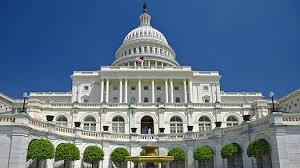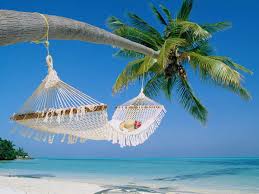We Americans work hard. Weekends are more like workends. We sleep with our smartphones. And we think vacations are for wimps. So we don’t take them. Or take work along with us if we do.
But what if taking vacation not only made you healthier and happier, as a number of studies have shown, but everyone around you? And what if everybody took vacation at the same time? Would life be better, not just for you, but for the entire society?
Yes, argues Terry Hartig, an environmental psychologist at Uppsala University in Sweden. Yes, indeed.
When people go on a relaxing vacation, they tend to return happier and more relaxed. (The operative word here being relaxing, not frenzied whirlwind.) Traffic? A smile and nod instead of flipping the bird. An upset at the office? A deep breath and a focus, not on the drama, but on the task at hand.
And those mellow, good vibes, he said, spread “like a contagion” to everyone you come in contact with. “Even people you don’t know personally,” he said. Send everyone away on vacation at the same time, and that contagion takes off through the population like a viral happiness pandemic.
Hartig calls it “collective restoration.”
To test his theory, Hartig and his colleagues studied monthly anti-depressant prescriptions in Sweden between 1993 and 2005. In a recently published study, they found that the more people took vacations at the same time, the more prescriptions dropped exponentially. That was true for men and women, and for workers as well as retirees.
Summer, by far, was the happiest time – or at least saw the steepest declines in anti-depressant prescriptions. It’s no surprise why: Since 1977, Swedish law has mandated that every worker have five weeks of paid vacation every year. And workers can take four consecutive weeks off in the summer.
“It’s like there’s this national agreement that it’s vacation time, and work will be left aside,” Hartig said. So instead of working and being distracted and busy, people get outside. They do things they like and enjoy. They see friends, play with their children, visit their aging parents, or finally have time for that cup of tea with a friend who’s been blue.
The benefits, Hartig said, are huge. Not only is the society measurably happier, but workers are more rested and productive, relationships are closer and people are healthier. “Depression is a very costly disease,” he said. (Depression costs the U.S. economy an estimated $23 billion a year in lost productivity.)
Europeans, with their 20 and 30 days of paid vacation every year, live longer and spend less on health care than Americans, Hartig said.
But that kind of widespread, vacation-induced health and euphoria is unlikely to hit the United States anytime soon. “Collective restoration,” Hartig said, is only possible if the entire population can coordinate time off. And the only way to do that, he argues, is through national policy.
The US is the only advanced economy with no national vacation policy. (Unless you count Suriname, Nepal and Guyana.) One in four workers, typically in low-wage jobs, have no paid vacation at all. Those that do, get, on average, 10 to 14 days a year.
American workers don’t take all their vacation days, leaving, by some estimates, 577 million unused days on the table every year. And even when they do, many say they take work along with them. (All those unused days add up to $67 billion in lost travel spending and 1.2 million jobs, according to a recent report by Oxford Economics, an economic forecasting group.)
Kathy Simons was one of them. Even though she knew better. Simons directs the Work-Life Center at MIT. She knows almost better than anyone how taking a break from work not only improves your mood, but your health: One long-term study found that men who don’t take vacations are 30 percent more likely to have heart attacks than those who do. For women, it’s 50 percent. Women who fail to take vacation are more likely to suffer from depression.
But for five years, Simons didn’t take a vacation. She loves her work, had some big projects take off, and didn’t feel she could afford to be away from the office. “But I really got pretty exhausted,” she said. It took worried friends to finally push her to get away with her husband to Cape Cod for a few days. They rode bikes, turned off computers, spent time outside and, she said “got transported, and sort of awed by nature again.”
She came back to the office relaxed, while everyone around her looked stressed. So did her happiness wear off on them, as Hartig theorizes?
“I do think my good mood is contagious,” she said. “But honestly, re-entry is hard because you’re so out of sync with what’s going on around you. In so many work environments, co-workers don’t ask where you’re going on vacation. They only want to know when you’re coming back. It would be a heck of a lot easier to take vacation if we didn’t have to do it alone.”
Because while you’re being awed by a sunrise in a kayak, somewhere in the back of your mind, you know your co-workers are getting ready for a busy day, that stuff is piling up on your desk and you almost dread the emails flooding into your inbox.
The closest that Americans may come to collective restoration, Hartig said, is the quiet week between Christmas and New Years, when large swaths of the population leave the office behind.
William Howard Taft didn’t want Americans to have to go on vacation alone. In 1910, he proposed giving American workers two to three months of paid vacation every year. The naturalist John Muir said better than compulsory schooling, the U.S. should consider compulsory vacationing. In 1938, Congress proposed the 40-hour work week, a minimum wage and two weeks of paid vacation. In both instances, the vacation proposals died.
Now, perhaps with dollar signs, not collective restoration in mind, the travel and tourism industry has launched the Vacation Equality Project and, with slick ads and petition drives, is pushing Congress for a guaranteed minimum amount of paid vacation.
John de Graaf, executive director of the Take Back Your Time organization who has been working on the campaign, said it’s a tough sell in the United States, where vacation is seen as an “extraneous luxury” of little benefit to anyone.
“People don’t experience very much vacation in the United States, so they’re inclined not to understand its value,” he said. “In fact, people are in so much debt that, if given the choice of time or money, people will choose money, which is why they unions tell me they won’t fight for time off.”
DeGraaf just finished work on a video for public television that noted that 20 years ago, 80 percent of the families visiting Yosemite National Park stayed overnight. Today, the average visit, usually in the car, frantically snapping pictures out the window, is five hours. Likewise, the U.S. Travel Association notes that family vacations in 1975 typically lasted one week. In 2010, it was 3.8 days.

The one place in America that comes the closest to Hartig’s dream of collective restoration, with everyone taking off at the same time, is, ironically enough, Washington, DC.
President Obama is heading off for 15 days with his family on Martha’s Vineyard. Members of Congress will scatter for August recess, as will many of the staffers who serve them and the lobbyists who buttonhole them. Washington DC will become a veritable ghost town. (In August, there is no traffic!)
So, come September, will our nation’s leaders be basking in the glow of collective restoration? Will calmer, more relaxed Republicans drop their lawsuit against Obama? Will lawmakers’ good moods mean progress on a host of unfinished business?
Or, is that just too much to expect from a few weeks off, even at the same time, when mid-term elections are just around the corner?
Source: Associated Press



